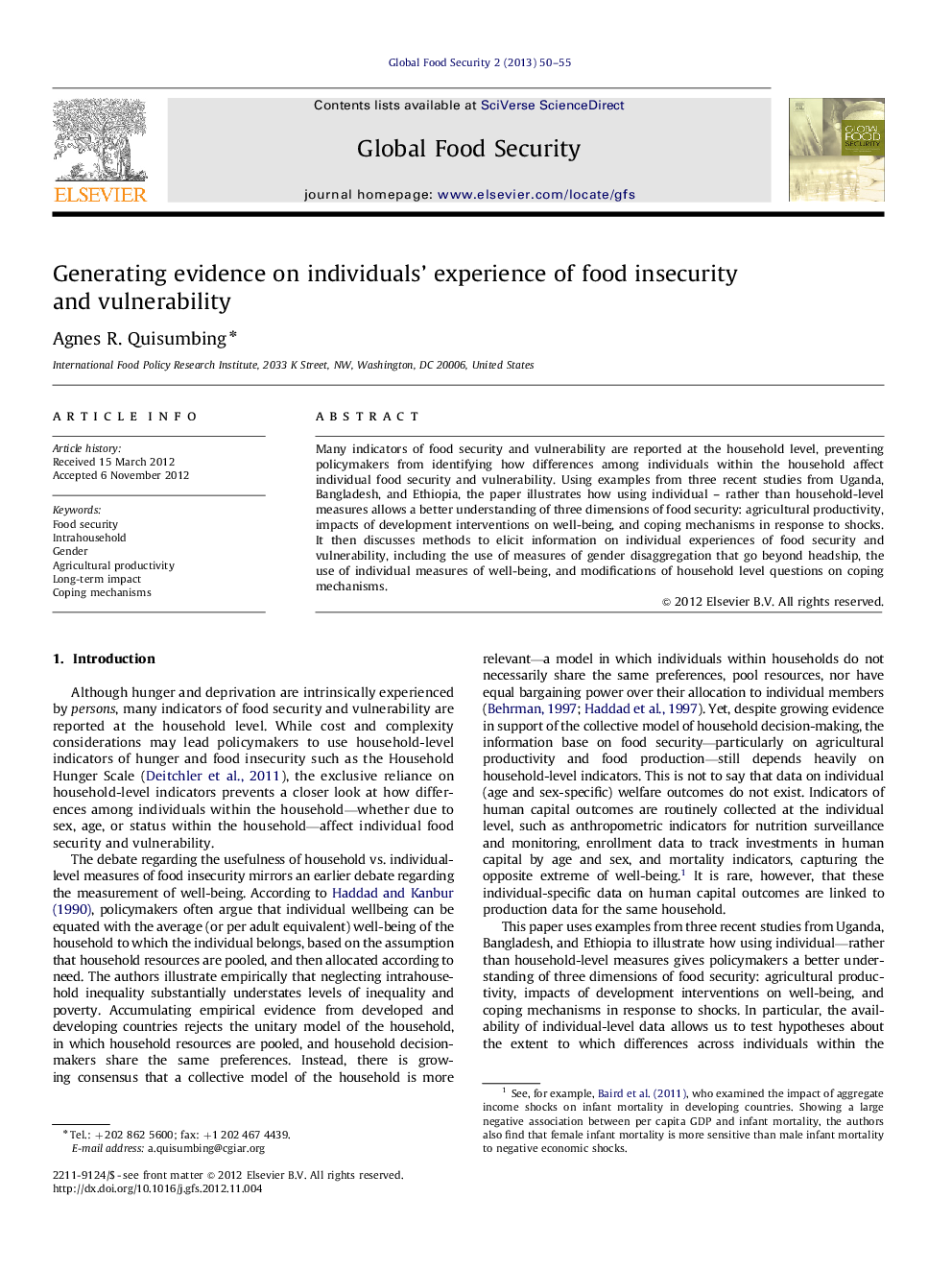| Article ID | Journal | Published Year | Pages | File Type |
|---|---|---|---|---|
| 1047580 | Global Food Security | 2013 | 6 Pages |
Many indicators of food security and vulnerability are reported at the household level, preventing policymakers from identifying how differences among individuals within the household affect individual food security and vulnerability. Using examples from three recent studies from Uganda, Bangladesh, and Ethiopia, the paper illustrates how using individual – rather than household-level measures allows a better understanding of three dimensions of food security: agricultural productivity, impacts of development interventions on well-being, and coping mechanisms in response to shocks. It then discusses methods to elicit information on individual experiences of food security and vulnerability, including the use of measures of gender disaggregation that go beyond headship, the use of individual measures of well-being, and modifications of household level questions on coping mechanisms.
► The paper reviews gains from using individual vs. household indicators of food security. ► Using sex of the household head vs. sex of the plot manager underestimates gender differences in agricultural productivity. ► Using household consumption and assets vs. individual nutritional indicators leads to different conclusions about agricultural programs. ► Standard questions about household coping mechanisms can be easily modified to look at vulnerable groups within the household.
